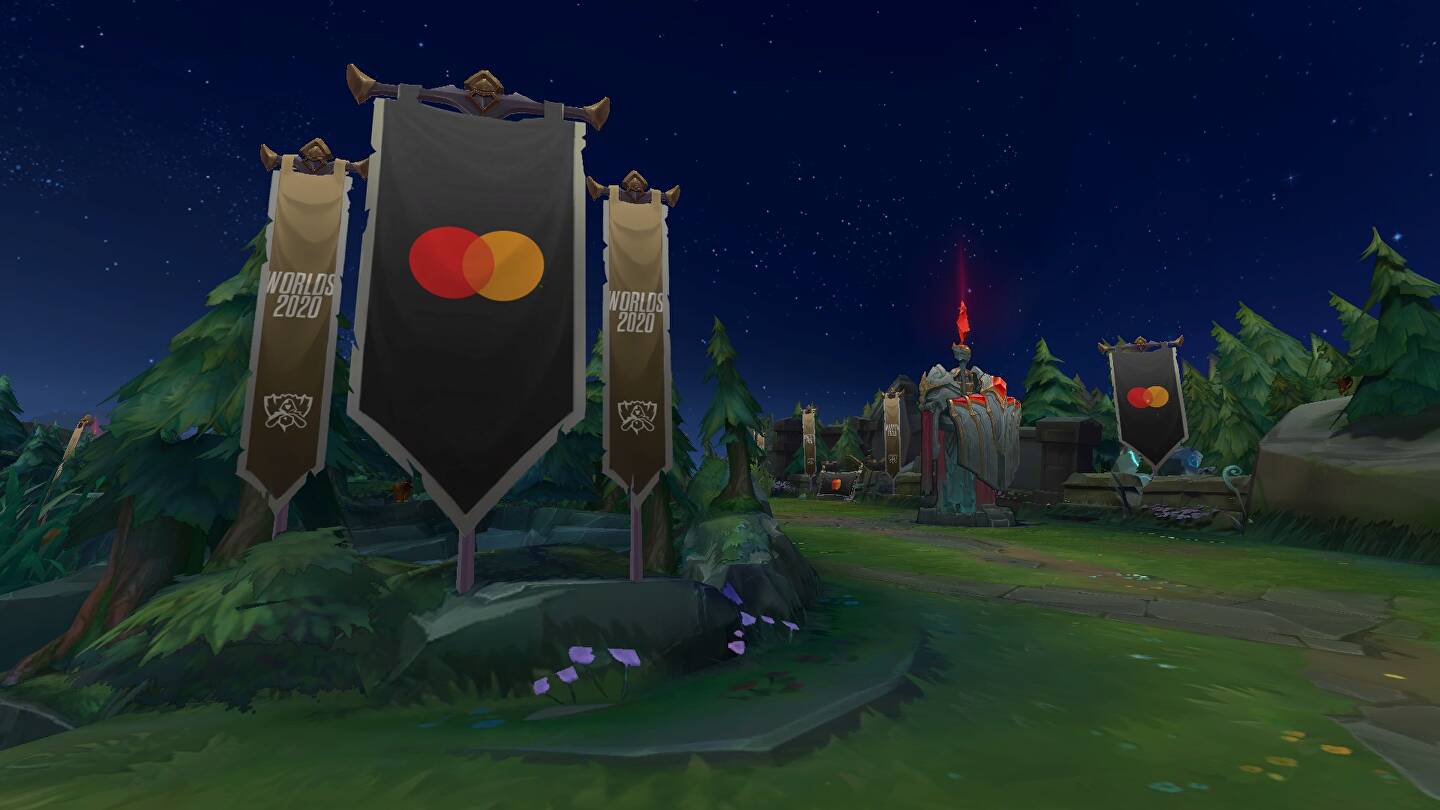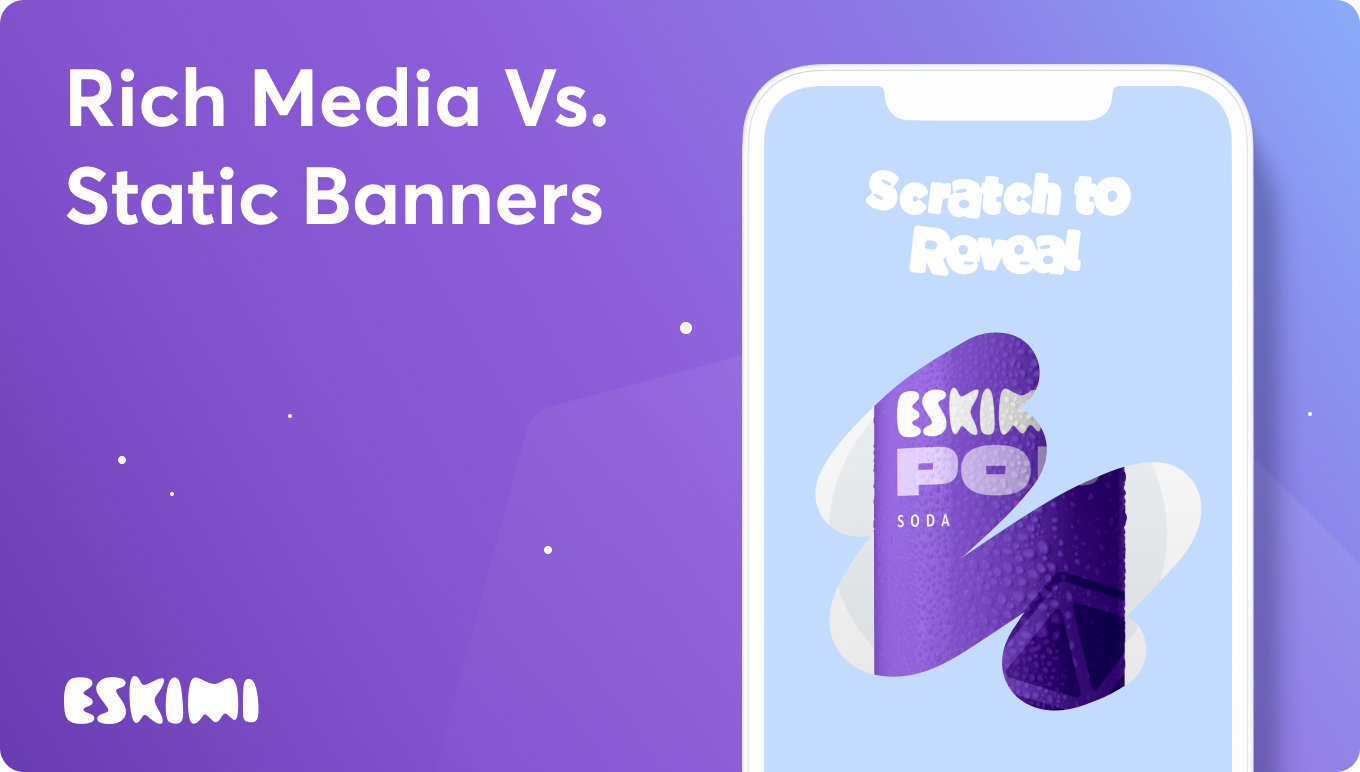Advertising In Games: Ad Types, Benefits, & Examples

The number of video gamers globally stood at 3.03 billion in 2022.
Out of all those, there were nearly 1.75 billion mobile gamers, which became the largest category of all digital gaming segments. This figure is only expected to grow and exceed 2.32 billion in the five coming years.
For advertisers, it’s a clear sign of rapidly emerging opportunities to reach diverse and highly engaged audiences. Advertising in games, also known as in-game advertising, can help brands tap into their ideal customers.
How exactly can you do that, what are the benefits of advertising in games, and what are some of the best in-game advertising examples?
Read this post to find out.
What is in-game advertising?

In-game advertising is the practice of buying ad placements in computer, video, or/and mobile games. Game developers use this strategy to boost their game revenue by selling available ad space in their game environment or within the game/app itself.
Although ads in games have always been perceived as slightly irritating, they have come a long way. They are now available in multiple, often less or non-intrusive formats, including intrinsic in-game ads.
Usually, game advertisements can be seen through pop-up messages, on-screen adverts, billboards, background displays, and more.
Who is the target audience for in-game advertising?
When you think of a stereotypical gamer, you likely imagine a nerdy teenage boy playing video games in his pitch-dark room. That’s not entirely true.
Although gaming personas overall are still largely male-dominated, mobile-only gamers actually have a higher ratio of females to males (55% to 45%, respectively), according to GWI.
Another fact is that games, especially mobile games, are played by people of all ages and from different contexts, and this audience is growing rapidly.
For instance, the most active group among the mobile-only players are Millenials (23-36-year-olds), same applies to casual video gamers.
Surprisingly (or not?), the second biggest mobile-only gamers’ group is Gen X (37-55-year-olds), while video games are played equally often by Gen Z (16-22-year-olds) and Gen X.
So it’s evident that some common misconceptions regarding the demographics of video games still exist. In reality, advertising in games allows brands to reach nearly any audience imaginable in a highly immersive and fun environment without harming their experience.
Types of in-game ads
Just like you can see many different types of ads browsing the internet (display, video advertising, etc.) or even walking in the city (DOOH, billboards, posters), in-game advertising isn’t focused on one specific advertisement type either.
In games, ad formats can vary depending on the device or game you are serving to, but there are some commonly used types of in-game ads that advertisers should be aware of.
Based on IAB UK definitions, in-game ads can be divided into three categories:
- Blended in-game. Blended in-game ads are one of the fastest-growing channels that let advertisers make their sponsored content a part of the gameplay. It means that blended in-game ads, also known as intrinsic in-game ads, appear in the game environment but don’t interrupt the process (sometimes even enhance the experience), making it a non-intrusive way to reach a target audience.
- Around-the-game. Around-the-game ads allow advertisers to promote their products/services during the gaming experience but not the gameplay itself. Some of the most common examples include rewarded videos or interstitial ads.
- Away-from-the-game. Away-from-the-game can be described as game advertising opportunities that exist outside the game, e.g., streaming, e-sports, influencer or content marketing, etc.

Let’s quickly go through some of the most commonly used in-game ad formats.
Display banners
You can think of display banners in games as OOH (Out-of-home) in the virtual environment. Such ads appear within the gameplay and are naturally placed on billboards, for example, that are part of the game design.
Some of the most popular sizes of in-game display ads include: 480x320, 300x250, 640x360, 336x280, 320x480, 320x50, and 640x480.
Video banners
In-game video banners work based on the same principle as display banners, only instead of an image, they play a video seamlessly blended into the game's background.
Video banners in games often mimic real-life ads that are placed on buildings, roadside billboards, and similar locations and can be seen in the background of the main action.
Audio ads
In-game audio ads are still a new solution but are already gaining traction among advertisers and suppliers. Many people playing games play them with sound, and audio ads can be a great way to take advantage of that without impacting user experience.
Rewarded ads
Rewarded video ads, as the name suggests, reward players in exchange for watching the ad. For example, they can get something helpful for the game, like currency, earn extra lives, more levels, etc.
It’s kind of a favor for a favor situation – advertisers can get more people to view their ads and boost brand awareness while players earn an advantage in the game.
Interstitial ads
Interstitial in-game ads are designed to cover the whole screen of their host app, meaning that they appear on top of the content and require some interaction (even if it’s just a skip button or clicking through an advertiser’s site).
They typically appear during natural pauses in the game, e.g., between levels, so technically don’t disrupt the gaming experience itself.
Expandable ads
Expandable in-game ads are always displayed in a collapsed form and only appear in full form when a user taps on them or swipes over them. These ads often show good conversion rates as primarily interested players choose to expand them.
Benefits of in-game advertising
- A diverse audience of gamers. As already mentioned above, the audience in games is far beyond the “teenage gamer” stereotype, as a huge variety of games lets people of different age groups and interests engage in this form of entertainment.
- High viewability. In-game ads are seamlessly integrated into the game, and most of the time, there’s no way to skip past them, whether it’s blended in-game ads or around-the-game advertising. The interactive nature of games and the inability to look away (it can negatively impact the game) keeps players’ attention focused on the screen, meaning that they are exposed to every ad that appears in the gaming environment.
- Accurate targeting. As games often have a specific audience, advertising in games allows brands to target particular demographics or interests. Precise targeting options can result in more effective campaigns and a higher ROI (Return on Investment) for advertisers.
- Increased brand awareness. In-game advertising can help increase brand awareness for products or services by exposing players to the brand in a unique and engaging way.
- Enhanced experience. This one is mainly relevant to blended in-game advertising, where ads can add to the realism of the game environment and create a more immersive experience. For instance, real product ads in various sports games can make the game feel more authentic, as we often see them during real competitions as well.
- Transparent measurement. In-game campaigns are highly measurable, as they allow advertisers to track such metrics as impressions, reach, views, viewability, VTR, dwell time, gaze time & rate, and more. Therefore, it helps them optimize future campaigns and potentially improve the results.
6 in-game ad examples from big brands
1. Lay’s
A world-famous potato chips brand, Lay’s, partnered with Eskimi and Anzu to launch an in-game advertising campaign to promote their new flavor and raise brand awareness. For this, Lay’s created a video ad that appeared in mobile games with over 100M downloads.
The ad naturally blended into the gaming environment and became part of its experience, offering a non-disruptive way of product promotion.
2. Mastercard

Mastercard, in partnership with Riot Games, the publisher of League of Legends, leveraged the popularity and engagement of e-sports to reach new audiences and increase brand awareness.
Mastercard’s visuals were seamlessly integrated into the game environment, appearing on various in-game assets like banners and signs around the virtual arena. To further incentivize engagement with the Mastercard brand, the campaign also offered exclusive in-game rewards for League of Legends (players who used Mastercard as their payment method for purchases).
3. Starbucks

Remember the Pokémon Go hype? In 2016, Starbucks perfectly leveraged it to its advantage by teaming up with Niantic, the developer of the game, to launch a large-scale in-game advertising campaign.
As part of the partnership, Starbucks locations across the US were designated as “PokéStops” and “Gyms” within the game, where players could gather supplies or battle other players.
Moreover, the campaign also included various in-game advertising elements featuring Starbucks branding and products, like the special in-game item “Starbucks-themed Pokémon Go Frappuccinos." These were made available to everyone who visited participating Starbucks locations, and players who made purchases at Starbucks could also earn bonus rewards within the game.
4. Hot Wheels

Hot Wheels has launched a blended in-game campaign with Eskimi and Anzu, placing product banners in relevant mobile games to expand the brand's audience and reach its intended audience.
Ads showcased the latest Hot Wheels collection of car models while the user was playing and appeared in the background of the gameplay, so gamers didn’t have to stop the game and watch the ad, yet it was still highly visible on the screen.
5. Disney

Disney, together with RapidFire, ran a dynamic in-game advertising campaign in order to promote the 2016 remake of the animated movie “Pete’s Dragon."
In-game ads appeared in several blockbuster Console and Steam video games played by the younger audience to align with the target demographic of Disney’s movie.
Since the campaign ran in Portugal, the brand also used geotargeting to increase the relevancy and effectiveness of the campaign and reach players based on their geolocation.
6. Obama’s presidential campaign

Not technically a brand, but Barack Obama’s presidential campaign in 2008 is definitely worth a mention as it was the first presidential candidate to buy ad space inside a video game.
The campaign aimed to reach younger voters and those typically hard to reach – young males between 18-34. Ads appeared in several popular EA games, including Burnout: Paradise, Madden 09, and NBA Live to remind players that early voting has begun and encourage them to act.
The campaign recognized that younger audiences, especially those who are passionate about gaming, are critical to reach for political campaigns, and in-game advertising offered a unique and effective way to connect with them.
In-game advertising: challenge accepted?
Advertising in games is rapidly becoming a powerful tool for brands to reach and engage with their intended audiences in new and exciting ways.
As the video game industry continues to grow, in-game advertising will likely become an even bigger part of the marketing mix for businesses across all industries. By exploring the possibilities that in-game ads offer, brands can get closer to building deeper connections with their customers and stay at the forefront of the competition.
Looking to bring your ads into the game environment? Contact the Eskimi team or book a demo for a smooth start.
Level Up Your Advertising with Eskimi
- Reach 96% of Open Web
- 2,500+ Targeting Options
- 100% Managed or Self-Service
- In-House Creative Studio Team
- Display, Video, In-Game & CTV
- #1 Rated DSP on G2














_MomentumLeader_Leader.png)



